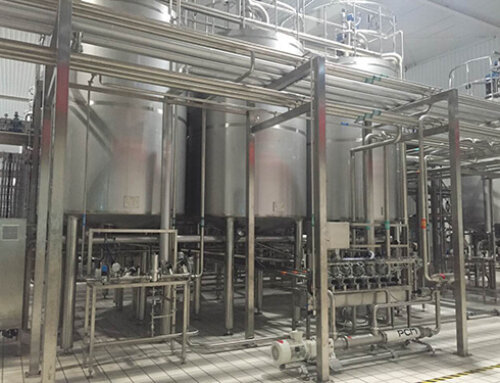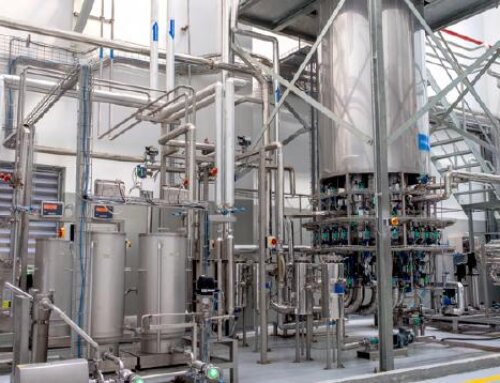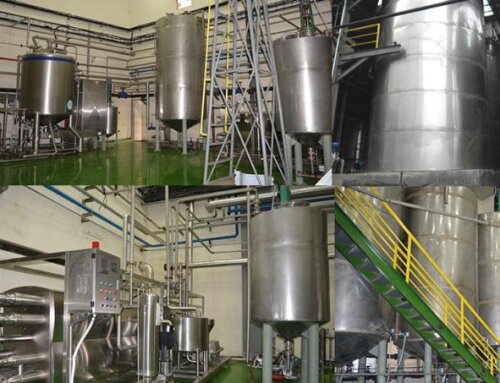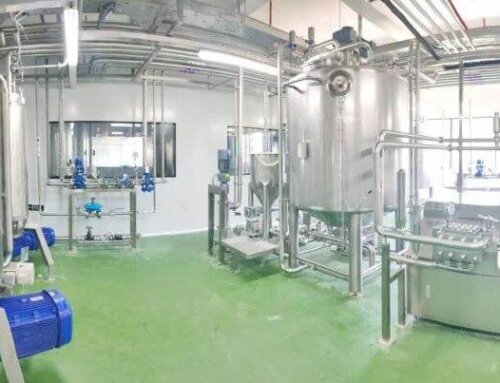Heat transfer solution is used for heating, cooling, condensing and evaporation of liquid food and beverage, the heat exchanger is designed to meet the demanding process conditions and optimize the utilization of energy.
As we all know, food safety is the foundation of the survival of food production enterprises. In order to produce high-quality products, we need to sterilize them in food and beverage processing to ensure that the food is non-toxic and harmless, and meets the nutritional requirements, will not cause any acute, subacute or chronic harm to human health.
Sterilization is the most important process in the processing of beverages and food. Beverage sterilization has two purposes: one is to kill pathogenic bacteria and spoilage bacteria in beverages and to destroy enzymes in food so that the beverage has a certain shelf life in a specific packaging container(Bottles, tin cans, pouches); the other is to keep nutrition and flavor in the beverage during the sterilization process. the classic application for sterilizer are used in following products:
- Dairy Products
- Milk (whole, skimmed, flavored)
- Cream, condensed milk
- Non-dairy alternatives (soy milk, oat milk, almond milk)
➡ Ensures long shelf life without refrigeration
- Beverages
- Juices (clear, with pulp)
- Tea and coffee drinks
- Functional drinks, sports drinks
➡ Preserves flavor and color better than traditional pasteurization
- Plant-Based Drinks & FSMP
- Liquid FSMP (Foods for Special Medical Purposes)
- High-protein or medical nutrition liquids
➡ Retains bioactive nutrients with sterile packaging for immune-sensitive users
- Liquid Eggs
- Whole egg liquid, egg white, egg yolk
➡ Prevents salmonella and extends shelf life
- Liquid Sauces & Condiments
- Tomato puree, ketchup, soup bases
- Soy sauce, sweet and sour sauce (low-viscosity)
➡ UHT is suitable when the consistency is pumpable
At present, most of the sterilization methods used in food and beverages are physical moist heat sterilization. This sterilization method uses steam or hot water as a medium to heat food and beverages at high temperature to kill microorganisms and obtain product shelf life. The most widely used in food and beverage processing sterilizer are plate type sterilizer, tubular type sterilizer, tube in tube sterilizer, scraper type sterilizer. The core component of the sterilizer is the heat exchanger. Today we will take a look at the following common heat exchanger structures and characteristics.
Plate Type Heat Exchanger
The plate sterilizer uses steam as the heating source to heat water, then use hot water as medium to do heat exchange with the material through SUS304 material plate type heat exchanger, to achieve the purpose of sterilization. This unit is usually used to pasteurize materials (including fresh milk, milk drinks, fruit juice, tea juice and other beverages, various alcohols and ice cream, etc.), and it can also be used in pre-pasteurization or cooling the raw materials. The sterilization process is homogenization 5-65°C, 65-85°C holding for 15S, and material outlet at 5°C.
As the heat conduction component of the plate sterilizer, the heat exchange plate is assembled by a corrugated fin-type stainless steel plate and a rubber sealing ring. This structure makes the plate sterilizer have the following characteristics:
- Poor airtightness and easy leakage. It is troublesome to replace the gasket frequently.
- The working pressure is limited, generally not more than 1MPa
- The operating temperature is limited by the temperature resistance of the gasket material.
- High heat transfer coefficient
- Easy to block, not suitable for fluids with suspended solids or viscosity liquids.
- Low investment cost

Tube and Shell Heat Exchanger
The tubular sterilizer uses double-layer tubes as the heat-conducting part, and achieves the purpose of sterilization through the heat exchange of hot water and materials. It is suitable for high-temperature sterilization of medium viscosity liquids and particulate materials such as concentrated citrus juice, apple juice, UHT milk. The sterilization process is usually 5-65°C homogeneous, 137°C for 3-5S, and material outlet temperature 25-30°C. This sterilization process is connected with an aseptic filling machine to produce aseptic products.
The tube and shell heat exchanger is corrugated tube structure, it has character of high heat transfer efficiency, less scaling, heating medium and the material temperature difference is small, heating uniform. The flow direction of material and heat medium in the tube is shown in the figure below:

Triple Concentric Tube Heat Exchanger
The main component of the tube in tube sterilization machine is a triple concentric tube heat exchanger made of four layers of casing tubes. The material is exchanged with hot water in the concentric casing tubes to achieve the purpose of sterilization. This kind of sterilization unit is suitable for sterilizing high-viscosity materials, such as concentrated tomato paste and mango puree. The equipment has compact structure, small floor space, high heat transfer efficiency and fully automatic control. The sterilization process is homogenization at 5-65°C, holding temperature at 118-120°C for 5-7S, and material discharge temperature at 25-30°C. The flow direction of material and heat medium in the tube is shown in the diagram below:

Scrape Surface Heat Exchanger
The scraped surface heat exchange efficiency is 3-5 times higher than other similar equipment. It is especially suitable for high-viscosity material liquid or material liquid containing particles (material liquid that is more sensitive to heat exchange). It can realize instant high-temperature sterilization and instant cooling of materials, solve the problems of high viscosity and slow flow of high-viscosity material liquid, and overcome the phenomenon of coking and material liquid crystallization on the heat transfer surface of the heat exchanger; the scrape type exchanger is suitable for the heat treatment of margarine, shortening, condiments, tomato sauce, banana puree peanut butter, chocolate, dairy products, syrup, jam, cosmetics and other industries. It is also suitable for biopharmaceutical industries that have special needs for instant heating and instant cooling.





